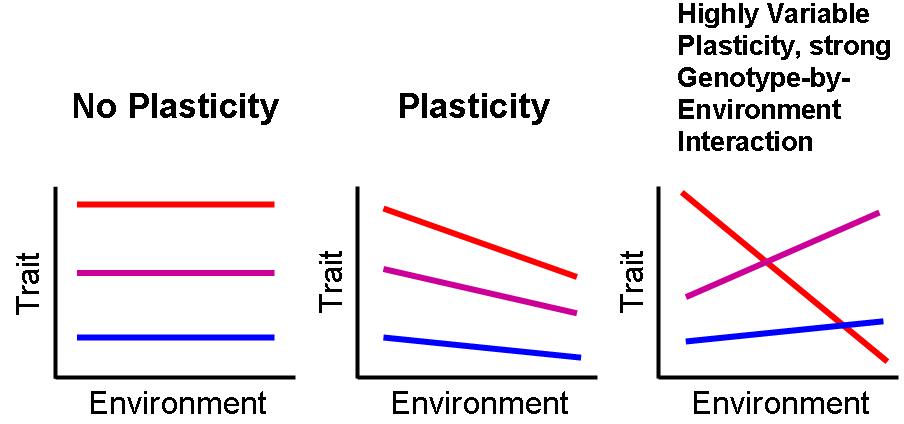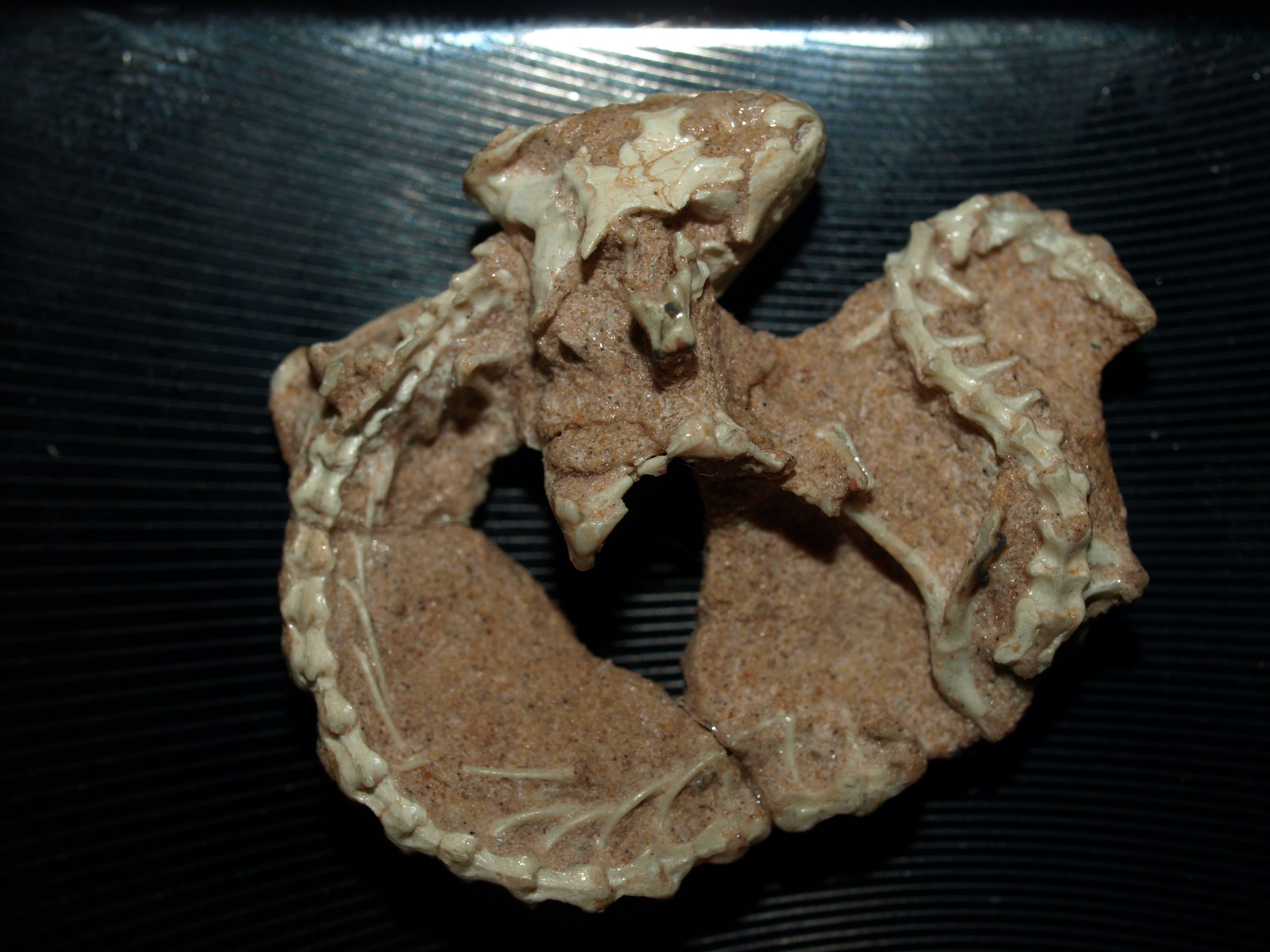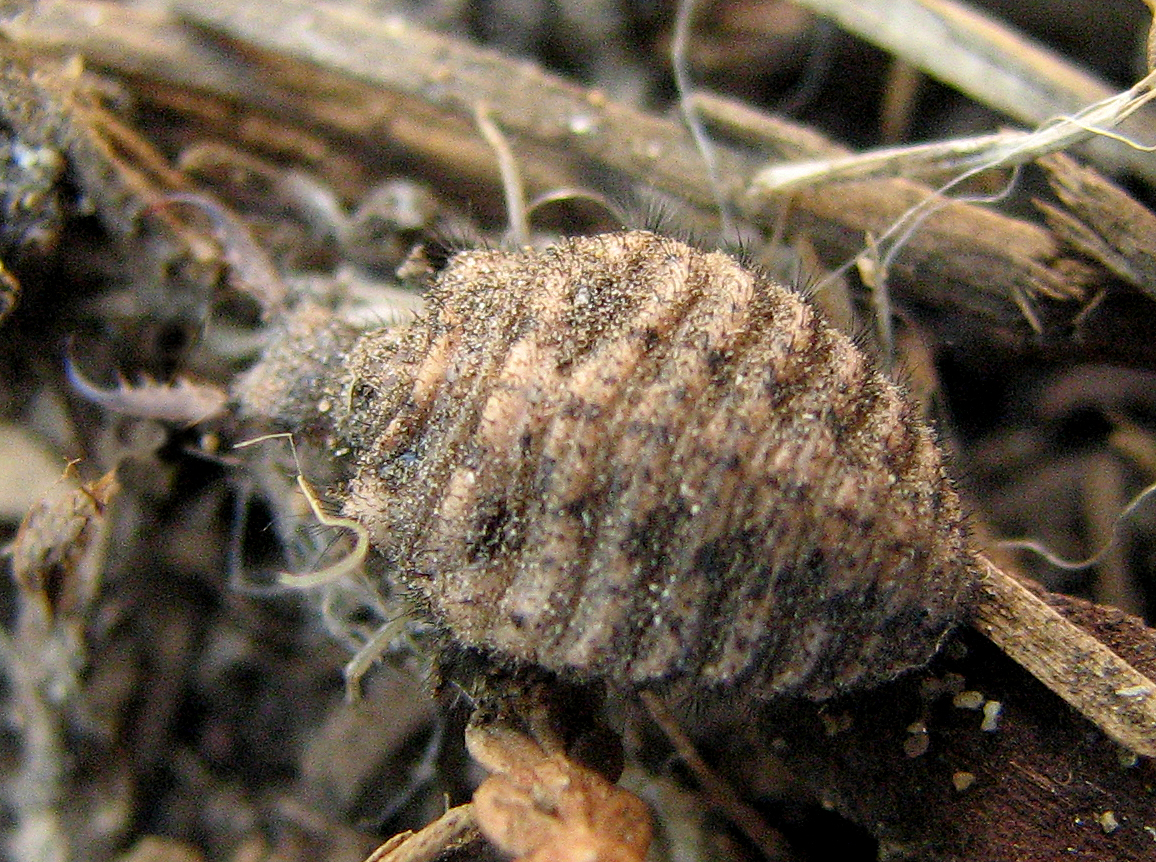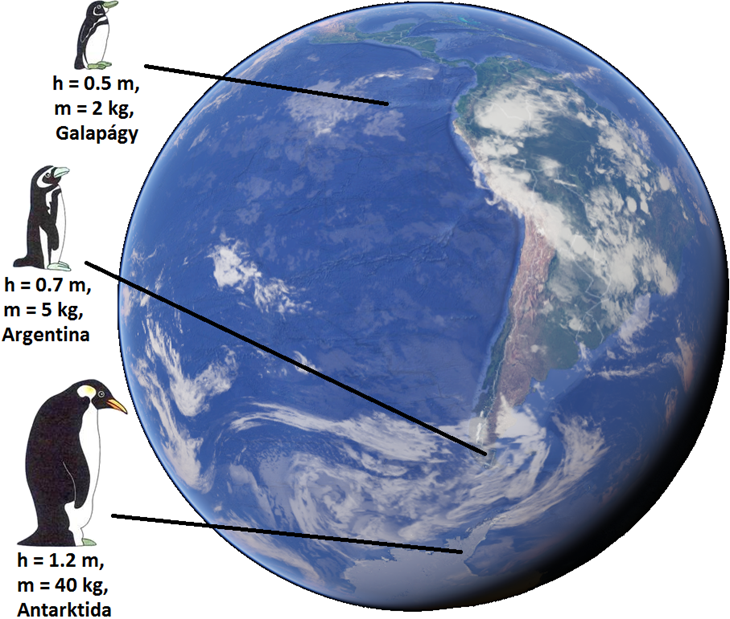|
Temperature-size Rule
The temperature-size rule denotes the plastic response (i.e. phenotypic plasticity) of organismal body size to environmental temperature variation. Organisms exhibiting a plastic response are capable of allowing their body size to fluctuate with environmental temperature. First coined by David Atkinson in 1996, it is considered to be a unique case of Bergmann's rule that has been observed in plants, animals, birds, and a wide variety of ectotherms. Although exceptions to the temperature-size rule exist, recognition of this widespread "rule" has amassed efforts to understand the physiological mechanisms (via possible tradeoffs) underlying growth and body size variation in differing environmental temperatures. History Relation to Bergmann's rule In 1847, Carl Bergmann published his observations that endothermic body size (i.e. mammals) increased with increasing latitude, commonly known as Bergmann's rule. His rule postulated that selection favored within species individuals ... [...More Info...] [...Related Items...] OR: [Wikipedia] [Google] [Baidu] |
Phenotypic Plasticity
Phenotypic plasticity refers to some of the changes in an organism's behavior, morphology and physiology in response to a unique environment. Fundamental to the way in which organisms cope with environmental variation, phenotypic plasticity encompasses all types of environmentally induced changes (e.g. morphological, physiological, behavioural, phenological) that may or may not be permanent throughout an individual's lifespan. The term was originally used to describe developmental effects on morphological characters, but is now more broadly used to describe all phenotypic responses to environmental change, such as acclimation ( acclimatization), as well as learning. The special case when differences in environment induce discrete phenotypes is termed polyphenism. Generally, phenotypic plasticity is more important for immobile organisms (e.g. plants) than mobile organisms (e.g. most animals), as mobile organisms can often move away from unfavourable environments. Neverthele ... [...More Info...] [...Related Items...] OR: [Wikipedia] [Google] [Baidu] |
Chelonians
Turtles are an order of reptiles known as Testudines, characterized by a special shell developed mainly from their ribs. Modern turtles are divided into two major groups, the Pleurodira (side necked turtles) and Cryptodira (hidden necked turtles), which differ in the way the head retracts. There are 360 living and recently extinct species of turtles, including land-dwelling tortoises and freshwater terrapins. They are found on most continents, some islands and, in the case of sea turtles, much of the ocean. Like other amniotes (reptiles, birds, and mammals) they breathe air and do not lay eggs underwater, although many species live in or around water. Turtle shells are made mostly of bone; the upper part is the domed carapace, while the underside is the flatter plastron or belly-plate. Its outer surface is covered in scales made of keratin, the material of hair, horns, and claws. The carapace bones develop from ribs that grow sideways and develop into broad flat plates th ... [...More Info...] [...Related Items...] OR: [Wikipedia] [Google] [Baidu] |
Squamata
Squamata (, Latin ''squamatus'', 'scaly, having scales') is the largest order of reptiles, comprising lizards, snakes, and amphisbaenians (worm lizards), which are collectively known as squamates or scaled reptiles. With over 10,900 species, it is also the second-largest order of extant (living) vertebrates, after the perciform fish. Members of the order are distinguished by their skins, which bear horny scales or shields, and must periodically engage in molting. They also possess movable quadrate bones, making possible movement of the upper jaw relative to the neurocranium. This is particularly visible in snakes, which are able to open their mouths very wide to accommodate comparatively large prey. Squamata is the most variably sized order of reptiles, ranging from the dwarf gecko (''Sphaerodactylus ariasae'') to the Reticulated python (''Malayopython reticulatus'') and the now- extinct mosasaurs, which reached lengths over . Among other reptiles, squamates are most ... [...More Info...] [...Related Items...] OR: [Wikipedia] [Google] [Baidu] |
Sceloporus Graciosus
The sagebrush lizard or sagebrush swift (''Sceloporus graciosus'') is a common species of phrynosomatid lizard found at mid to high altitudes in the western United States of America. It belongs to the genus ''Sceloporus'' ( spiny lizards) in the Phrynosomatidae family of reptiles. Named after the sagebrush plants near which it is commonly found, the sagebrush lizard has keeled and spiny scales running along its dorsal surface. The sagebrush lizard is similar to the western fence lizard, another '' Sceloporus'' species found in the western US. The sagebrush lizard can be distinguished from the western fence lizard in that the former is on average smaller and has finer scales. The keeled dorsal scales are typically gray or tan, but can be a variety of colors. The main (ground) color is broken by a lighter gray or tan stripe running down the center of the back (vertebral stripe) and two light stripes, one on either side of the lizard (dorsolateral stripes). ''S. gra ... [...More Info...] [...Related Items...] OR: [Wikipedia] [Google] [Baidu] |
Stenothermic
A stenotherm (from Greek στενός ''stenos'' "narrow" and θέρμη ''therme'' "heat") is a species or living organism only capable of living or surviving within a narrow temperature range. This type of temperature specialization is often seen in organisms that live in environments where the temperature is relatively stable, such as in deep sea environments or in polar regions. The opposite of a stenotherm is a eurytherm, an organism that can function at a wide range of different body temperatures. Eurythermic organisms are typically found in environments where the temperature varies more significantly, such as in temperate or tropical regions. The size, shape, and composition of an organism's body can affect its temperature regulation, with larger organisms tending to have a more stable internal temperature than smaller organisms. Examples ''Chionoecetes opilio'' is a stenothermic organism, and temperature affects its biology throughout its life history, from embryo to adult ... [...More Info...] [...Related Items...] OR: [Wikipedia] [Google] [Baidu] |
Chorthippus Brunneus
''Chorthippus brunneus'', also known as the common field grasshopper, is a species of grasshopper of the subfamily Gomphocerinae. It was first described by Thunberg in 1815. It is also known as ''Gryllus brunneus'', although this name has not been adopted by the IUCN. The IUCN lists ''C. brunneus'' as Least Concern. Appearance ''C. brunneus'' are predominantly brown. However, they show a large variation in colour and can also be green, black, purple, or white. Wing patterns vary between individuals and can be mottled, striped, striped-mottled, or plain. Both green and purple grasshoppers tend to have plain forewing patterns while black grasshoppers primarily have mottled forewing patterns. Brown grasshoppers do not consistently have the same forewing pattern instead they have variable forewing patterns. At least two loci are responsible for pronotum color in ''C. brunneus''. Green alleles are dominant to all other colors while brown alleles are recessive to all other colors. ... [...More Info...] [...Related Items...] OR: [Wikipedia] [Google] [Baidu] |
Eastern Fence Lizard
The eastern fence lizard (''Sceloporus undulatus'') is a medium-sized species of lizard in the family Phrynosomatidae. The species is found along forest edges, rock piles, and rotting logs or stumps in the eastern United States. It is sometimes referred to as the prairie lizard, fence swift, gray lizard, gravid lizard, northern fence lizard or pine lizard. It is also referred to colloquially as the horn-billed lizard. One of its most notable behaviors is that of its escape behavior when encountering fire ants. Taxonomy The generic name, ''Sceloporus'', is derived from the Greek ''skelos''/σκελος, meaning "leg", and the Latin ''porus'', meaning "hole", referring to the enlarged femoral pores found in this genus of lizards. The specific name, ''undulatus'', is Latin for "wave", referring to the transverse dark crossbars on the backs of these lizards. Liddell HG, Scott R (1980). ''Greek-English Lexicon, Abridged Edition''. Oxford, United Kingdom: Oxford University Press. 80 ... [...More Info...] [...Related Items...] OR: [Wikipedia] [Google] [Baidu] |
Viviparous Lizard
The viviparous lizard, or common lizard, (''Zootoca vivipara'', formerly ''Lacerta vivipara''), is a Eurasian lizard. It lives farther north than any other species of non-marine reptile, and is named for the fact that it is viviparous, meaning it not only lays eggs, but also gives birth to live young. Both "''Zootoca''" and "''vivipara''" mean "live birth," in Greek and Latin respectively. It was called ''Lacerta vivipara'' until the genus ''Lacerta'' was split into nine genera in 2007 by Arnold, Arribas & Carranza. Male and female ''Zootoca vivipara'' are equally likely to contract blood parasites. Additionally, larger males have been shown to reproduce more times in a given reproductive season than smaller ones. The lizard is also unique as it is exclusively carnivorous, eating only flies, spiders, and insects. Studies show that the more carnivorous an individual is (the more insects they eat), the less diverse the population of parasitic helminths that infest the lizards. ' ... [...More Info...] [...Related Items...] OR: [Wikipedia] [Google] [Baidu] |
Myrmeleon Immaculatus
''Myrmeleon immaculatus'' is a species of pit-trapping antlion in the family Myrmeleontidae The antlions are a group of about 2,000 species of insect in the neuropteran family Myrmeleontidae. They are known for the predatory habits of their larvae, which mostly dig pits to trap passing ants or other prey. In North America, the l .... It is found in Central America and North America and is a particularly common species in the eastern United States.This species is usually a blue-grey color and the adults are 30mm long. References Further reading * Myrmeleontidae Articles created by Qbugbot Insects described in 1773 Taxa named by Charles De Geer {{antlion-stub ... [...More Info...] [...Related Items...] OR: [Wikipedia] [Google] [Baidu] |
Caenorhabditis Elegans
''Caenorhabditis elegans'' () is a free-living transparent nematode about 1 mm in length that lives in temperate soil environments. It is the type species of its genus. The name is a blend of the Greek ''caeno-'' (recent), ''rhabditis'' (rod-like) and Latin ''elegans'' (elegant). In 1900, Maupas initially named it ''Rhabditides elegans.'' Osche placed it in the subgenus ''Caenorhabditis'' in 1952, and in 1955, Dougherty raised ''Caenorhabditis'' to the status of genus. ''C. elegans'' is an unsegmented pseudocoelomate and lacks respiratory or circulatory systems. Most of these nematodes are hermaphrodites and a few are males. Males have specialised tails for mating that include spicules. In 1963, Sydney Brenner proposed research into ''C. elegans,'' primarily in the area of neuronal development. In 1974, he began research into the molecular and developmental biology of ''C. elegans'', which has since been extensively used as a model organism. It was the first multice ... [...More Info...] [...Related Items...] OR: [Wikipedia] [Google] [Baidu] |
Bergmann's Rule
Bergmann's rule is an ecogeographical rule that states that within a broadly distributed taxonomic clade, populations and species of larger size are found in colder environments, while populations and species of smaller size are found in warmer regions. Bergmann's rule only describes the overall size of the animals, but does not include body parts like Allen's rule does. Although originally formulated in relation to species within a genus, it has often been recast in relation to populations within a species. It is also often cast in relation to latitude. It is possible that the rule also applies to some plants, such as ''Rapicactus''. The rule is named after nineteenth century German biologist Carl Bergmann, who described the pattern in 1847, although he was not the first to notice it. Bergmann's rule is most often applied to mammals and birds which are endotherms, but some researchers have also found evidence for the rule in studies of ectothermic species, such as the ant ... [...More Info...] [...Related Items...] OR: [Wikipedia] [Google] [Baidu] |



.jpg)
_in_the_Aamsveen%2C_The_Netherlands.jpg)


